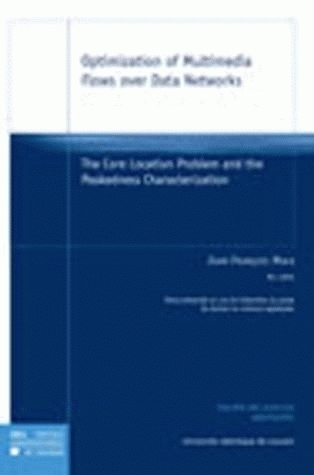- EAN13
- 9782930344904
- Éditeur
- Presses Universitaires du Louvain
- Date de publication
- 17 juin 2005
- Collection
- Thèses de la Faculté des sciences économiques, sociales, politiques et de communication
- Nombre de pages
- 134
- Dimensions
- 16 x 2 cm
- Poids
- 229 g
- Langue
- eng
Optimization Of Multimedia Flows Over Data Networks, The Core Location Problem And The Peakedness Characterisation
Jean-François Macq
Presses Universitaires du Louvain
Prix public : 13,00 €
In the first part of the thesis, we address the optimization of multimedia applications such as videoconferences or multi-player games in which user- dependent information has to be sent from the users to a core node to be chosen, and then global information has to be multicast back from the core node to all users. For a given communication network, this optimization seeks a core node under two potentially competing criteria, one being the sum of the distances the users, the other being the cost of connecting this core node and the users with a multicast (or Steiner) tree. We first consider the problem of minimizing a weighted sum of the two criteria and propose a heuristic which rapidly computes a solution guaranteed to be within a few percent of the optimum. Then we characterize the worst-case trade-offs between the two criteria and show that there always exists a core location for which each criterion is close to its minimum value. The second part concerns the protection of multimedia streaming applications against packet losses. By adding redundancy within blocks of consecutive data packets, losses can be recovered by the receiver unless long bursts of packets are lost inside the network. It has thus been observed that splitting packet streams onto several paths typically decreases the probability of an irrecoverable loss. Whereas current approaches rely on an exact computation of the probability and are consequently restricted to very small network instances, we propose to approximate this probability by measuring the impact of the chosen routing on the peakedness of the received packet stream. The peakedness of a stream may be seen as a measure of how packets are spread over time within the stream. Numerical experiments are presented and show that our method yields good approximations of the probability of irrecoverable loss.


















